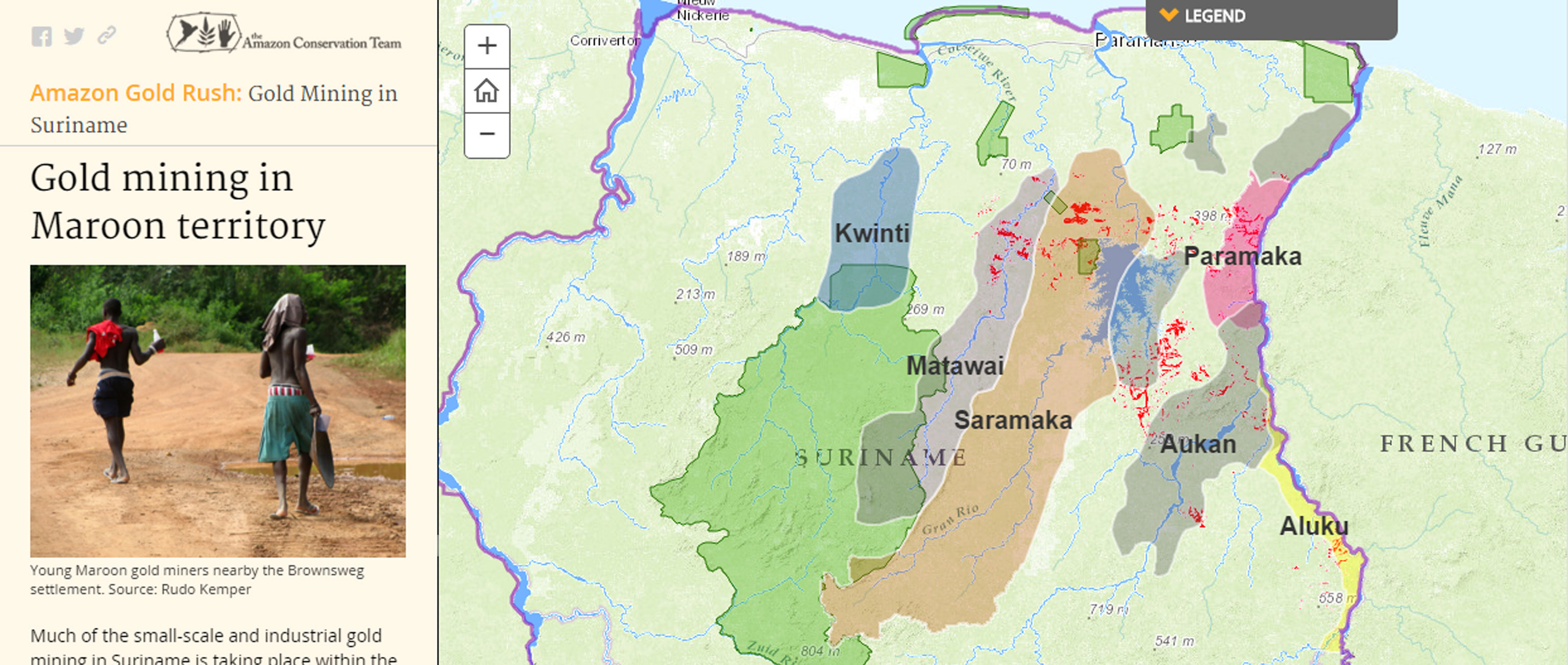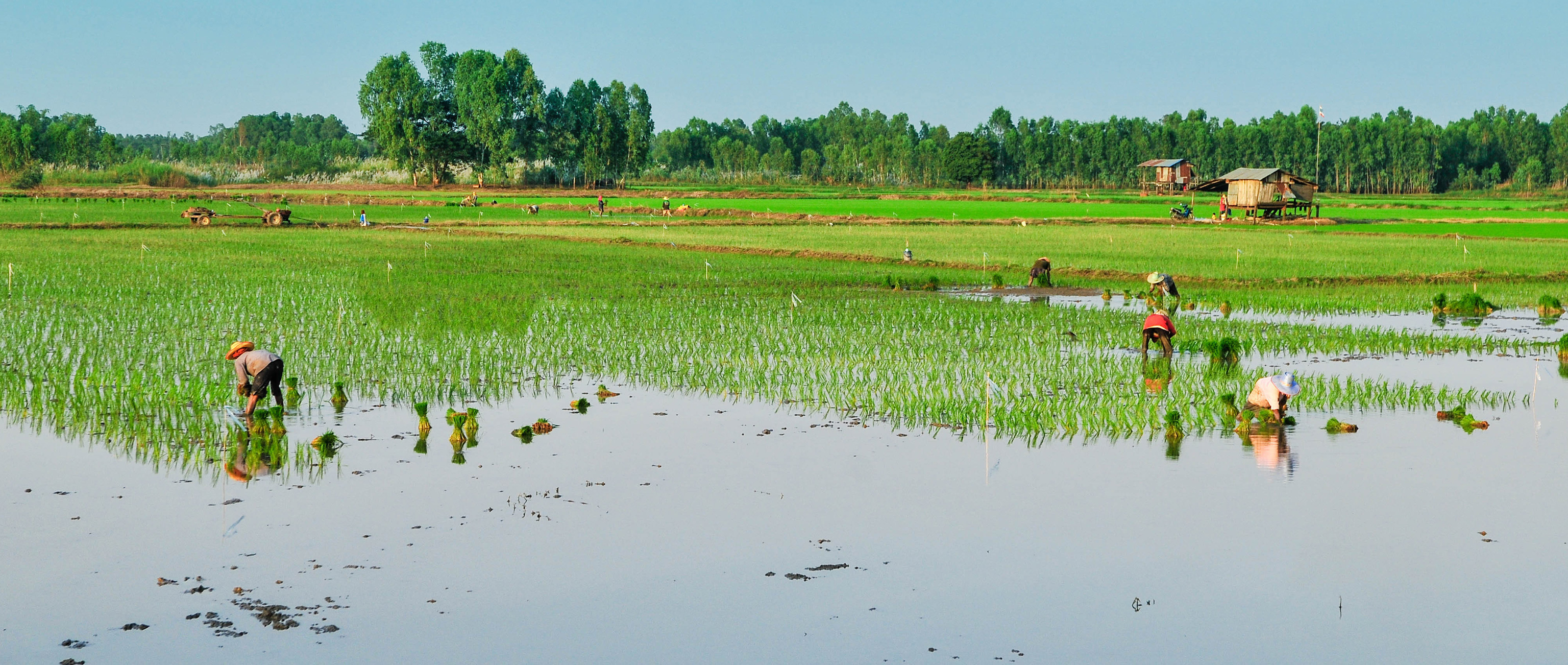Skoll Awardee Amazon Conservation Team (ACT) just launched a new website called Amazon Gold Rush: Gold Mining in Suriname. The site offers a rich, interactive user experience that tells the story of how the expansion of small-scale gold mining is having disastrous effects on Suriname’s rivers, biodiversity, tree cover, and indigenous populations.
Suriname is a tiny country just north of Brazil. It has a forest cover rate of 95 percent, making it one of the most forested countries in the world and a major source of biodiversity.
Gold mining has increasingly become an integral part of Suriname’s economy—the amount of land affected by mining has grown nearly nine-fold from 2000 to 2014. Small-scale gold mining is of particular concern. In contrast to its industrial counterpart, small-scale mining is often less regulated and more destructive to the environment.
For over 20 years, ACT has worked with indigenous groups in nearby Colombia to help them map their lands. This work put them in a unique position to help expose the negative consequences of small-scale gold mining.
In Suriname, ACT is tracking the deforestation and pollution stemming from these mining operations. ACT estimates that nearly 400,000 Surinamese, about 75 percent of the country’s population, live in areas affected by a toxic mining by-product called mercury effluent.
Using satellite data from Google Earth Engine, ACT estimates that 32 percent of deforestation in Suriname can be attributed to gold mining. In the indigenous Maroon territories, where many villages are dependent on gold for their livelihoods, the amount of deforestation attributable to mining jumps to nearly 45 percent. The Suriname mapping project was made possible by a recent Skoll-funded collaboration with Imazon, a Skoll Awardee based in Brazil.
ACT is helping local Surinamese use technology and information to influence the public debate and put pressure on Suriname’s government, gold industry associations, and miners. By increasing transparency, ACT and its local partners are helping to contain small-scale gold mining and protect the country’s wealth of biodiversity.
ACT also works with indigenous groups like the Maroons to build capacity for conservation monitoring and to develop alternative business models that don’t contribute to deforestation. They educate indigenous people about sustainable practices, and they train park guards to report environmental abuses to government agencies.
Through their work, ACT is shining a spotlight on the pressures faced by communities across the Amazon.



